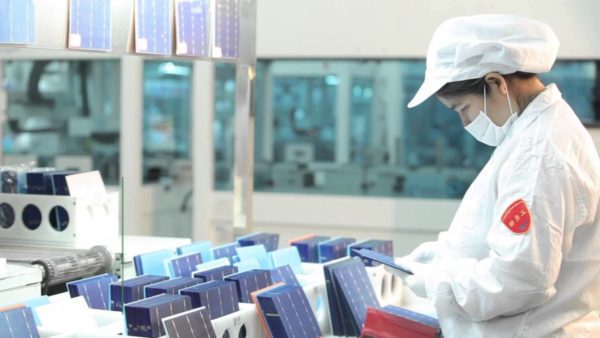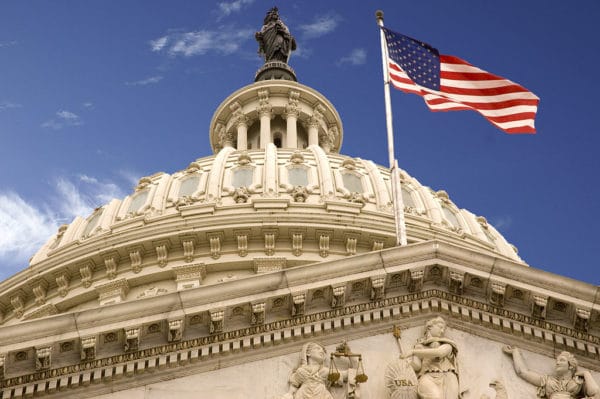I will testify today on behalf of LG before the U.S. International Trade Commission at a hearing related to the extension of the Section 201 ”safeguard” tariffs on imported PV modules and cells.
If you’re a developer, installer, or otherwise rely on purchasing solar panels for your business, I recognize that you likely may not want these safeguard tariffs to continue.

Trust me – I understand your position and, as someone who is also deeply invested both personally and professionally in the long-term health of the solar industry, I empathize with it.
But LG’s position – asking the ITC to extend the tariffs for another four years and to increase of the quota on imported cells – is clearly in the long-term best interest of all downstream participants. Don’t believe me? Hear me out.
The sky has not yet fallen (or has it?)
Opposition to the tariffs in 2018 highlighted significant project cancellations and lost jobs if the tariffs were to be imposed.
At a macro level, the solar industry has exceeded every forecast during the period of the tariffs in every category— from megawatts deployed to jobs created. Anecdotally, I’m hearing that today more companies can’t build projects due to a lack of labor rather than tariff-related costs slowing or stopping projects.

Image: JinkoSolar
However, the solar supply chain of Q4 2021 is starting to feel like a lost verse of Billy Joel’s “We Didn’t Start the Fire.”
Between skyrocketing logistics costs, which are compounded by port delays, the power crisis in China forcing factories to operate at significantly reduced capacities, and the overhanging threat of U.S. Customs and Border Protection detaining modules associated with forced labor, the solar supply chain coming out of Asia represents significant risk.
Many have argued the U.S. should double-down on its efforts to grow downstream deployments using cheap imported material. The clear downside to that strategy is now being painfully exposed. When that supply chain falters, there is no alternate option.
U.S. solar manufacturing exists and is growing
Today, there’s enough U.S. manufacturing capacity either already operating or coming on-line to support roughly one-third of installer demand.
Hardly insignificant, but still with a lot of upside potential. What’s notable is a lot of this capacity was brought online since the Section 201 tariffs went into effect and a lot more has been announced.
While the jobs these factories create are a fraction of the jobs in the installation sector, the reality is these jobs are complementary in nature. Factories feed installers. Having alternate and diverse supply chains will ensure product continues to flow into the market, and thus hedges foreign supply chain risks. Domestic factories directly and indirectly create jobs and protect jobs.
Companies that are considering making significant capital investments need to have some near-term certainty of market economics to make those investments. Just as quickly as China entered a power crisis and their factories ground to a halt, they could fire back up.

Image: Wikimedia Commons/David Maiolo
Tariffs alone will not be enough to create long-term, sustainable U.S. jobs in the solar industry. They must be coupled with legislation designed to support domestic manufacturing. The Solar Energy Manufacturing for America Act (SEMA) is one major step in this direction.
It would provide tax credits for American manufacturers throughout the supply chain, from production of polysilicon to cells and fully assembled modules. SEMA would re-energize the U.S. manufacturing sector with skilled, good-paying jobs for the solar industry and, more critically, help diversify the upstream supply chains without creating upward cost pressure.
This bill, and other similar green jobs legislation, would boost domestic solar manufacturing and create significant long-term stable jobs throughout the domestic supply chain. As we transition to clean energy as a nation, the creation of green energy jobs represents a key element of the Biden administration’s ambitious climate goals.
In four years, there will be no more safeguard tariffs. But will there be a sufficiently robust local supply chain to help buffer against wild swings in the market overseas?
The actions we take today–as an entire industry–will affect our ability to continue to grow as we meet the imperative of installing solar to help protect our environment and grow our economy.
The views and opinions expressed in this article are the author’s own, and do not necessarily reflect those held by pv magazine.
This content is protected by copyright and may not be reused. If you want to cooperate with us and would like to reuse some of our content, please contact: editors@pv-magazine.com.








I can’t help but see this as something the fossil-fuel industry is salivating over, as it will help to slow down solar installations across the US. Every industry that’s being disrupted by new technology is fighting to keep the status quo, no matter how dirty and inefficient they are. If the US is going to get off of fossil fuels ASAP, then it needs to import as many gigawatts of panels as it can now, so they can be installed ASAP.
Clearly something is wrong when Americans pay 3-4x as much for rooftop solar systems as Australians do. But more than the cost of the panels, it’s design and permitting costs which are largely to blame. We need more standardization and code changes.